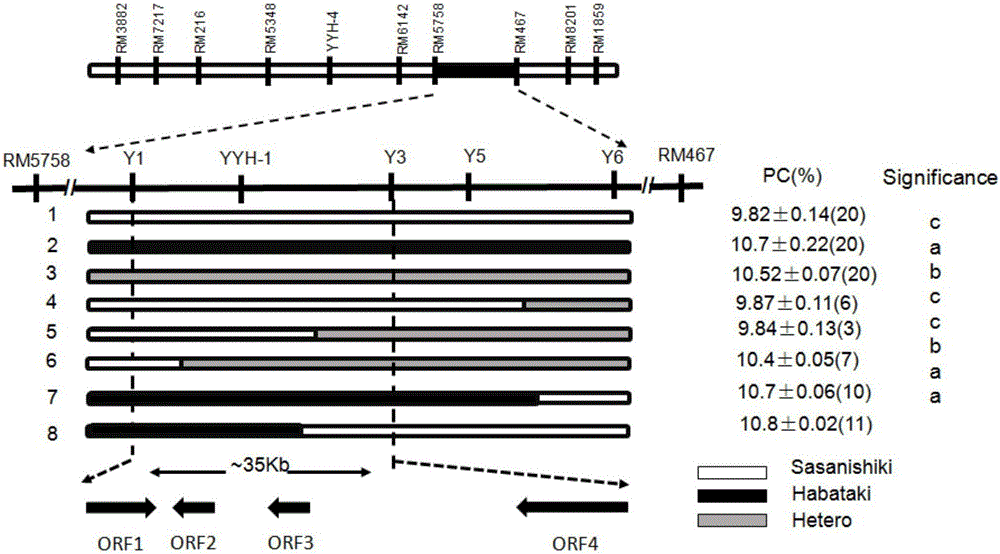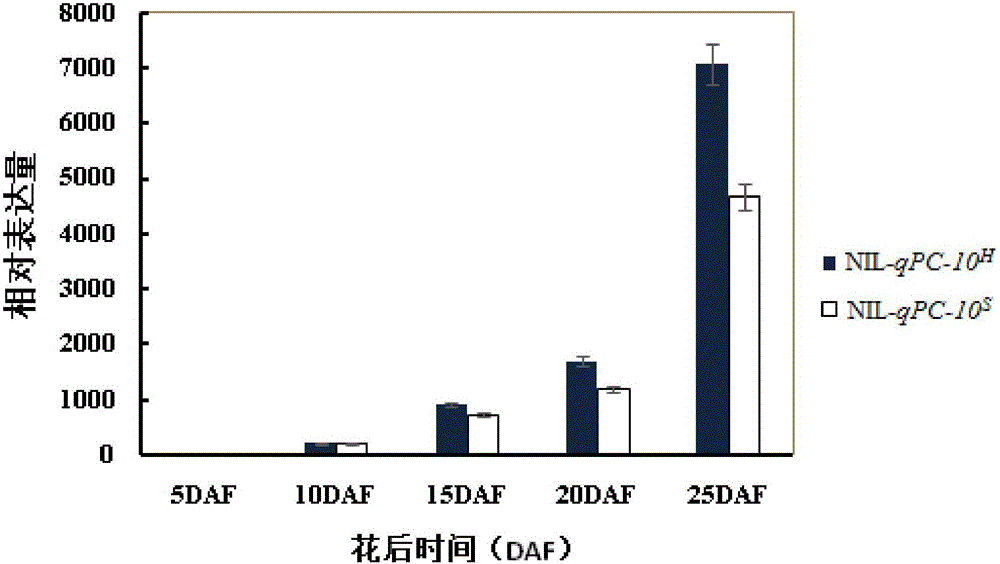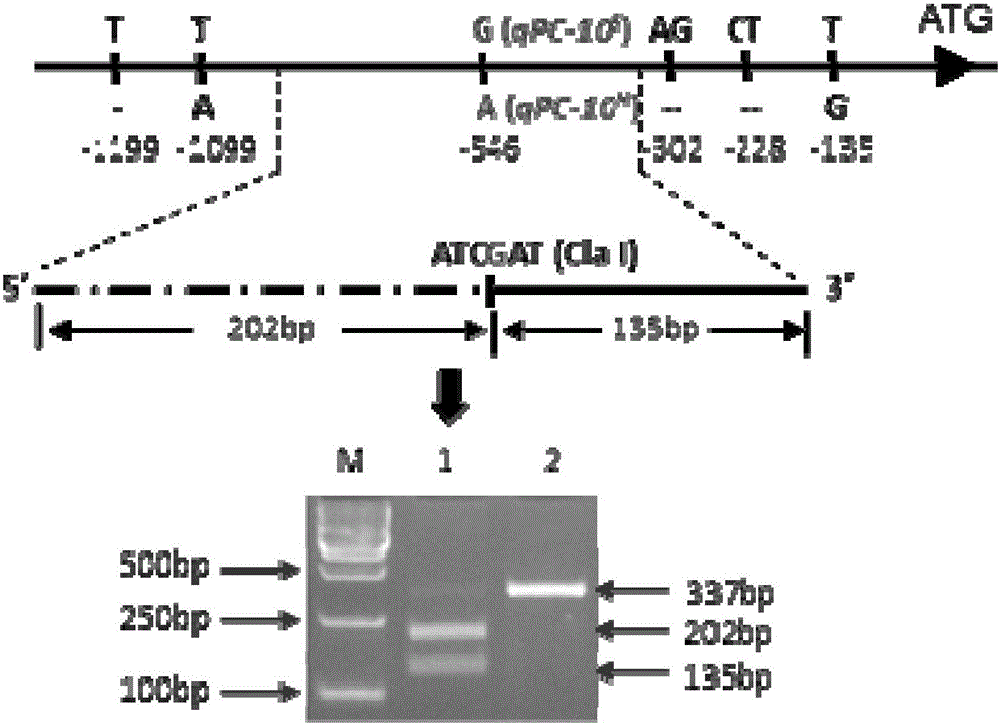Gene for increasing protein content of japonica rice and application
A protein content and protein technology, applied in the field of plant biology technology and genetic engineering, can solve the problems that affect the competitiveness of rice, cannot meet the consumption demand of high-quality rice, and the quality of rice is low
- Summary
- Abstract
- Description
- Claims
- Application Information
AI Technical Summary
Problems solved by technology
Method used
Image
Examples
Embodiment 1
[0044] Example 1: QTL mapping of rice protein content
[0045] 1. Phenotype measurement of rice protein content
[0046] After the grains are naturally dried, they are placed at room temperature for at least 3 months to ensure that the grains are dry and the moisture content of each strain is relatively consistent. The brown rice is obtained by peeling the hulls on the rice unpolishing machine, and the brown rice is ground into polished rice on the rice polishing machine. Quickly detect the protein content of polished rice on a near infrared rapid analyzer.
[0047] 2. Identify QTLs for protein content in polished rice using single-fragment substitution lines
[0048] From 2007 to 2008, the protein content of the typical indica rice variety Habataki and the japonica rice variety Sasanishiki were identified in three different environments, and it was found that there were significant differences in protein content in different environments (Table 1). In the 39 chromosome single-segme...
Embodiment 2
[0051] Example 2: Fine localization and map-based cloning of qPC-10
[0052] 1. The development of molecular markers
[0053] The SSR mark information used in the present invention is all from the Gramene website database (http: / / www.gramene.org. / ). In addition, according to the genome sequence of the japonica rice variety Nipponbare ( http: / / rgp.dna.affrc.go.jp ), and the genome sequence of the indica variety 93-11 ( http: / / rise.genomics.org.cn / ) Designed a polymorphic InDel (Insert / Deletion) mark between Habataki and Sasanishiki for the fine positioning analysis of qPC-10.
[0054] 2. Analysis of recombinant individual plants, fine mapping of qPC-10 and determination of candidate genes
[0055] The genotypes and phenotypes of 39 single-segment substitution line populations were identified. SL431 was considered to contain qPC-10 and its polished rice protein content was significantly higher than that of the background parent Sasanishiki. SL431 is based on Sasanishiki and has o...
Embodiment 3
[0056] Example 3: Candidate gene expression and transgene verification of qPC-10
[0057] Real-Time expression profile analysis found that the gene is only expressed in the endosperm and not expressed in other tissues during the whole growth period. In order to further clarify the cause of the protein content variation caused by the qPC-10 gene, we constructed a qPC-10 gene Near isogenic line, NIL-qPC-10 H And NIL-qPC-10 S . The expression of qPC-10 gene was analyzed by real-time RT-PCR. The results show that qPC-10 from the indica rice Habataki H The allele expression is significantly higher than qPC-10 in japonica rice S Allele (attached figure 2 ).
[0058] In order to verify the function of the qPC-10 gene, according to the predicted full-length cDNA sequence of the candidate gene (2001-3500bp of SEQ ID NO. 1), a pair of specific primers were designed to amplify the Habataki promoter and coding region sequence, and then ligated to TA On the cloning vector, the correct clone ...
PUM
 Login to View More
Login to View More Abstract
Description
Claims
Application Information
 Login to View More
Login to View More - R&D
- Intellectual Property
- Life Sciences
- Materials
- Tech Scout
- Unparalleled Data Quality
- Higher Quality Content
- 60% Fewer Hallucinations
Browse by: Latest US Patents, China's latest patents, Technical Efficacy Thesaurus, Application Domain, Technology Topic, Popular Technical Reports.
© 2025 PatSnap. All rights reserved.Legal|Privacy policy|Modern Slavery Act Transparency Statement|Sitemap|About US| Contact US: help@patsnap.com



